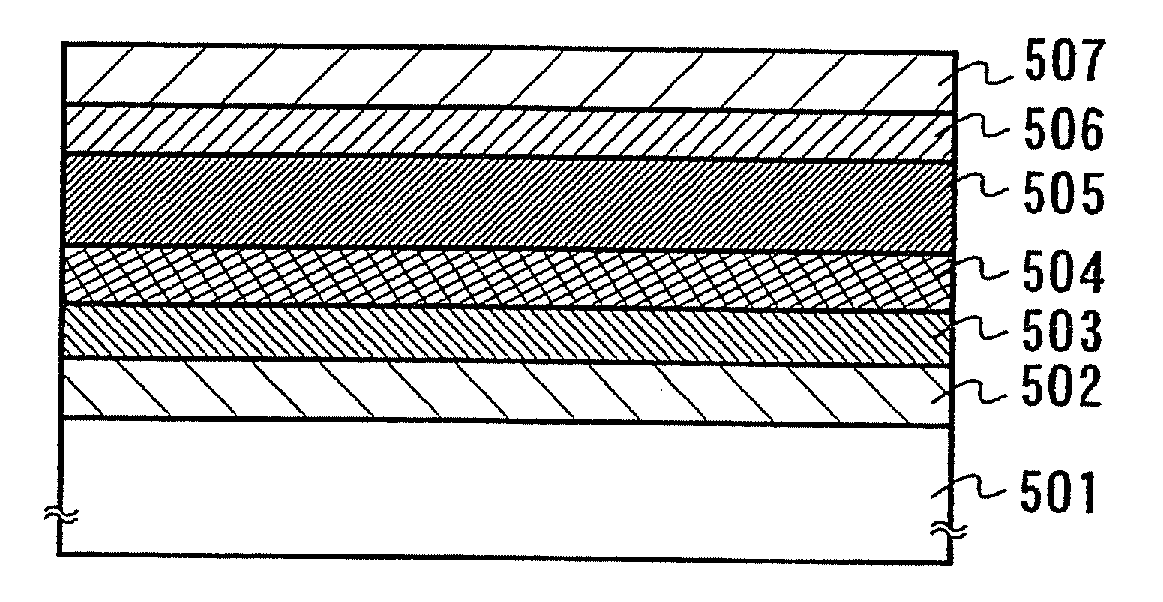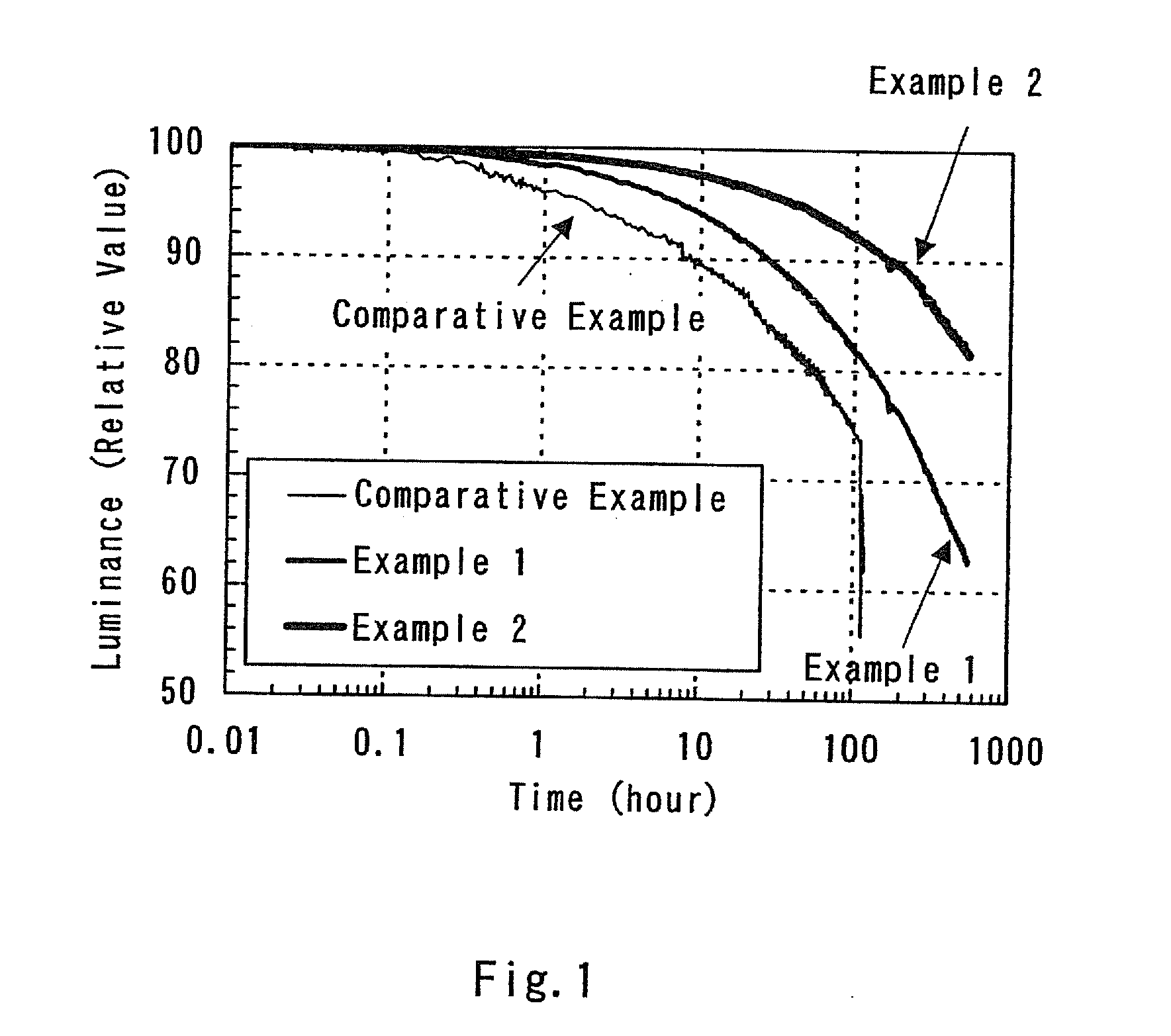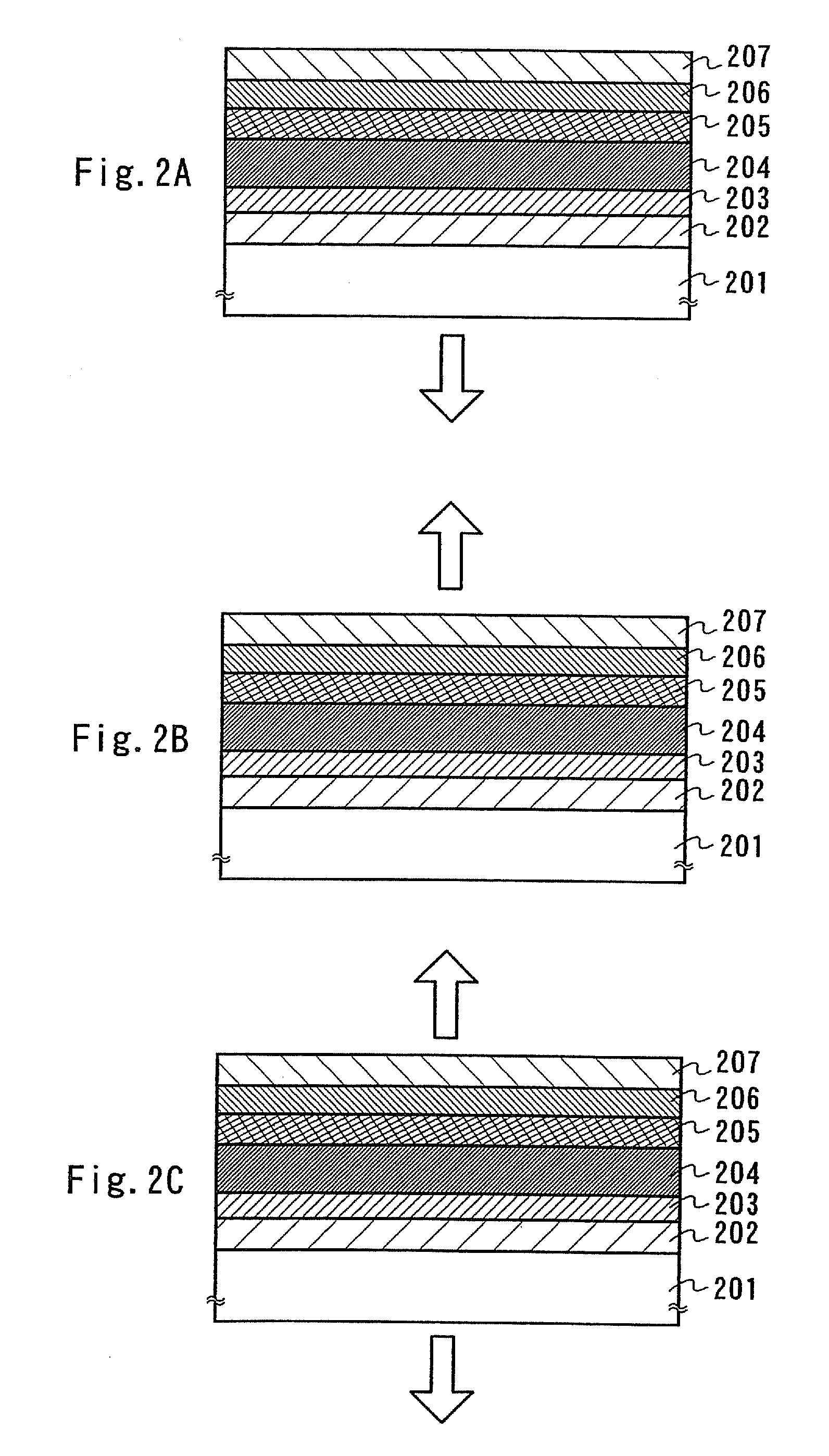Light-emitting device and method for manufacturing the same
a technology of light-emitting devices and manufacturing methods, applied in the field of light-emitting elements, to achieve the effect of prolonging the li
- Summary
- Abstract
- Description
- Claims
- Application Information
AI Technical Summary
Benefits of technology
Problems solved by technology
Method used
Image
Examples
example 1
[0057]Hereinafter, a method for manufacturing a light-emitting element according to the present invention and properties of the light-emitting element is explained.
[0058]A first electrode is formed by depositing an indium tin oxide (ITO) over a glass substrate. Then, the glass substrate deposited with the ITO is processed in vacuum at 150° C. for 30 minutes.
[0059]A first layer is formed by co-evaporation of a molybdenum oxide and α-NPD having high hole transporting properties over the first electrode. The weight ratio of the molybdenum oxide and the α-NPD is 0.245:1. The first layer is formed to have a thickness of 130 nm. As used herein, the term “co-evaporation” refers to a method for evaporating each of materials from a plurality of evaporation sources provided in one processing chamber, and mixing the evaporated materials in the gas phase to deposit the mixed materials onto a subject.
[0060]A second layer is formed by vapor deposition of α-NPD over the first layer to have a thick...
example 2
[0068]A method for manufacturing a light-emitting element according to the present invention and characteristics of the light-emitting element is explained.
[0069]A first electrode is formed by depositing an indium tin oxide (ITO) over a glass substrate. The glass substrate deposited with the ITO is processed in vacuum at 150° C. for 30 minutes.
[0070]A first layer is formed over the first electrode by co-evaporation of a molybdenum oxide, α-NPD having high hole transportation properties, and rubrene having a high steric hindrance. The weight ratio of the molybdenum oxide and the rubrene is 0.245:0.018. The first layer is formed to have a thickness of 130 nm.
[0071]A second layer is formed by vapor deposition α-NPD over the first layer to have a thickness of 10 nm.
[0072]A third layer is formed over the second layer by co-evaporation of Alq3 and coumarin-6 to have a thickness of 37.5 nm. The weight ratio of the Alq3 and the coumarin-6 is 1:0.002.
[0073]A fourth layer is formed by vapor d...
example 3
[0079]A method for manufacturing a light-emitting element according to the present invention and properties of the light-emitting element is explained.
[0080]A first electrode is formed by depositing an indium tin oxide (ITO) over a glass substrate. The glass substrate deposited with the ITO is processed in vacuum at 150° C. for 30 minutes.
[0081]A first layer is formed over the first electrode by co-evaporation of a molybdenum oxide, 4,4-bis(N-(4-(N,N-di-m-trylamino)phenyl)-N-phenylamino)biphenyl (abbreviated DNTPD) having high hole transportation properties, and rubrene having a high steric hindrance. The weight ratio of the molybdenum oxide, the DNTPD, and the rubrene is 0.5:1:0.05. The first layer is formed to have a thickness of 120 nm.
[0082]A second layer is formed by vapor deposition of α-NPD over the first layer to have a thickness of 10 nm.
[0083]A third layer is formed over the second layer by co-evaporation of Alq3 and coumarin-6 to have a thickness of 37.5 nm. The weight ra...
PUM
 Login to View More
Login to View More Abstract
Description
Claims
Application Information
 Login to View More
Login to View More - R&D
- Intellectual Property
- Life Sciences
- Materials
- Tech Scout
- Unparalleled Data Quality
- Higher Quality Content
- 60% Fewer Hallucinations
Browse by: Latest US Patents, China's latest patents, Technical Efficacy Thesaurus, Application Domain, Technology Topic, Popular Technical Reports.
© 2025 PatSnap. All rights reserved.Legal|Privacy policy|Modern Slavery Act Transparency Statement|Sitemap|About US| Contact US: help@patsnap.com



